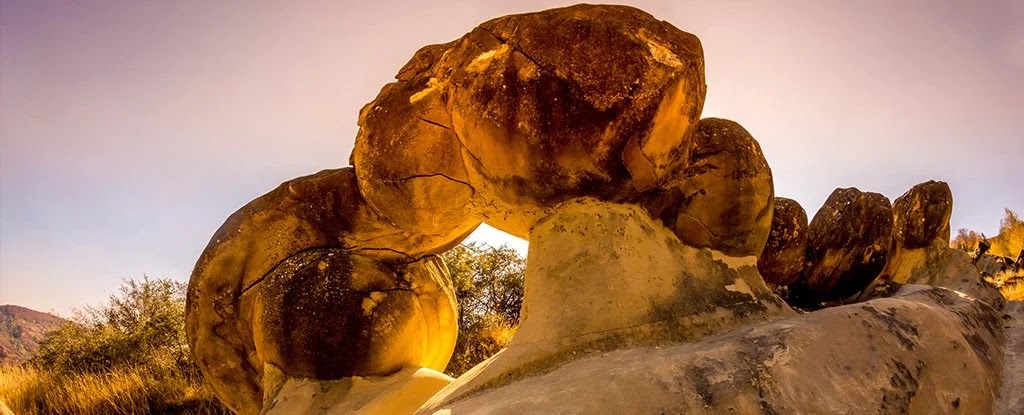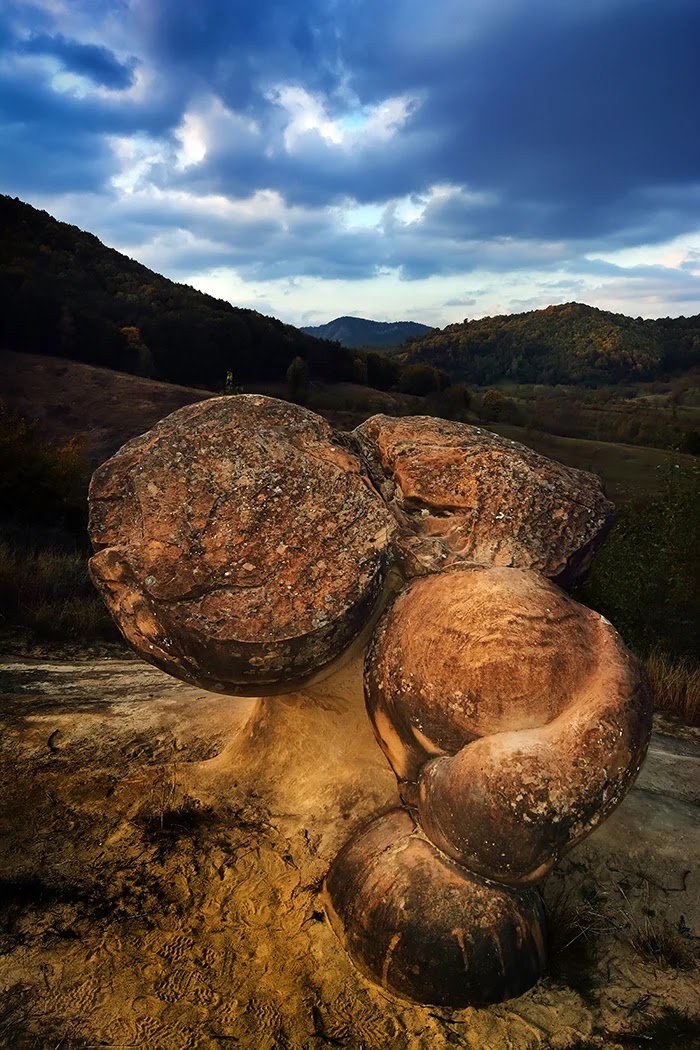A small town in Romania called Costesti is home to unusual geological manifestations – bulging bulbous boulders called trovants. These stones have long intrigued locals, with their organic-looking shapes and strange cement oozings, inspiring myths about the stones’ ability to grow and move – like living beings rather than inanimate objects.
Trovants vary greatly in size and shape – some can snugly fit in your palm, while others loom overhead, up to 4.5 metres tall. Of the 100s of known trovants, seen across at least 20 sites through Romania, some were only unearthed after the sand around them was quarried away.
Calcium carbonate:
Historical studies have attributed the growth of “Trovants” to rainwater rich in calcium carbonate. Whereas, after heavy rain saturated with calcium carbonate, the Trovants rocks absorb the minerals in the rainwater.
Then a fusion occurs between the rain minerals and the chemical bonds already present in those rocks, resulting in internal pressure forces that lead to the emergence of protrusions that grow from the center to the edges, and multiply at a sedimentation rate of up to 4-5 centimeters within 1200 years.
It is likely that the researchers were formed during the earthquakes that struck the planet 6 million years ago in the middle Miocene period, which extends from 5.332 million to 23.03 million years ago.
Its content has been likened to the concrete mixture, as they are sedimentary sand rocks that are linked together by a cement of limestone (calcium carbonate). Scientists have interpreted its spherical shape by the fact that the seismic waves inside the earth had compressed sandy sediments and lime cement to form them on this spherical body.
The Trovants move from one place to another
Trovants rocks are not considered strange because of their structure and ability to grow and reproduce only, as their ability to move from one place to another makes it more mysterious. It also has root-like extensions and age rings that are visible when cutting the stone.
The surrounding sandstone layers contain sheets (a series of fine layers) indicating that the area was originally an ancient marine environment when the stones and sedimentary layers were found around it. Here, the discovery of the origin of these multiplying stones can be likened to the same mechanism through which bivalve fossils are found inside some rocks.
These stones have long aroused the interest of the local population, with their organic forms and exotic leaching of cement, which inspired many myths about the ability of stones to grow and move just like living things rather than being dead rocks.
Thus, the stones of “Trovants” – which combine the characteristics of a plant and a stone at the same time – may not be alive in the literal sense, but it is certain that they have been found on the surface of the earth and have multiplied since ancient times, so that they may be older than the appearance of the first human.


